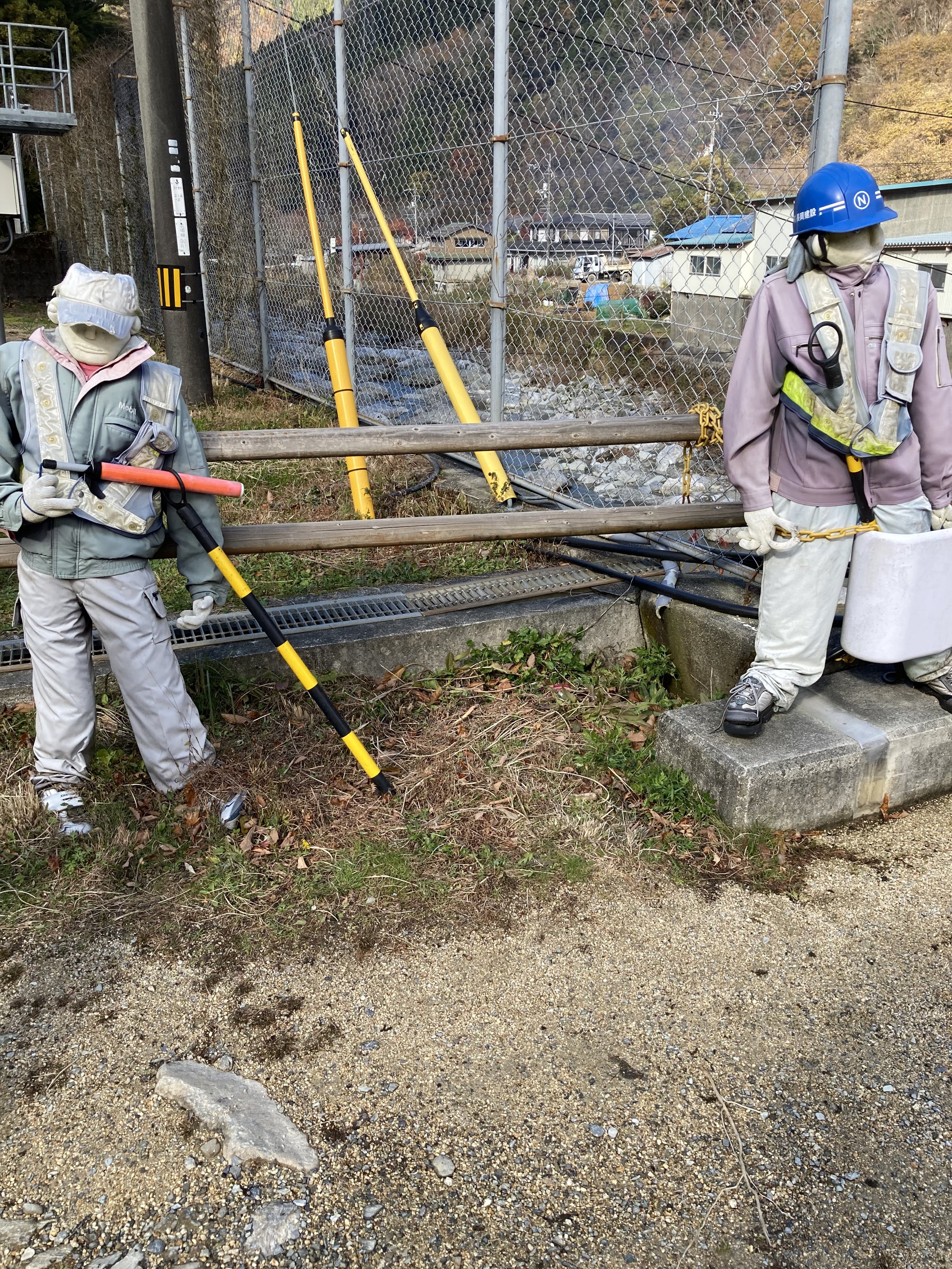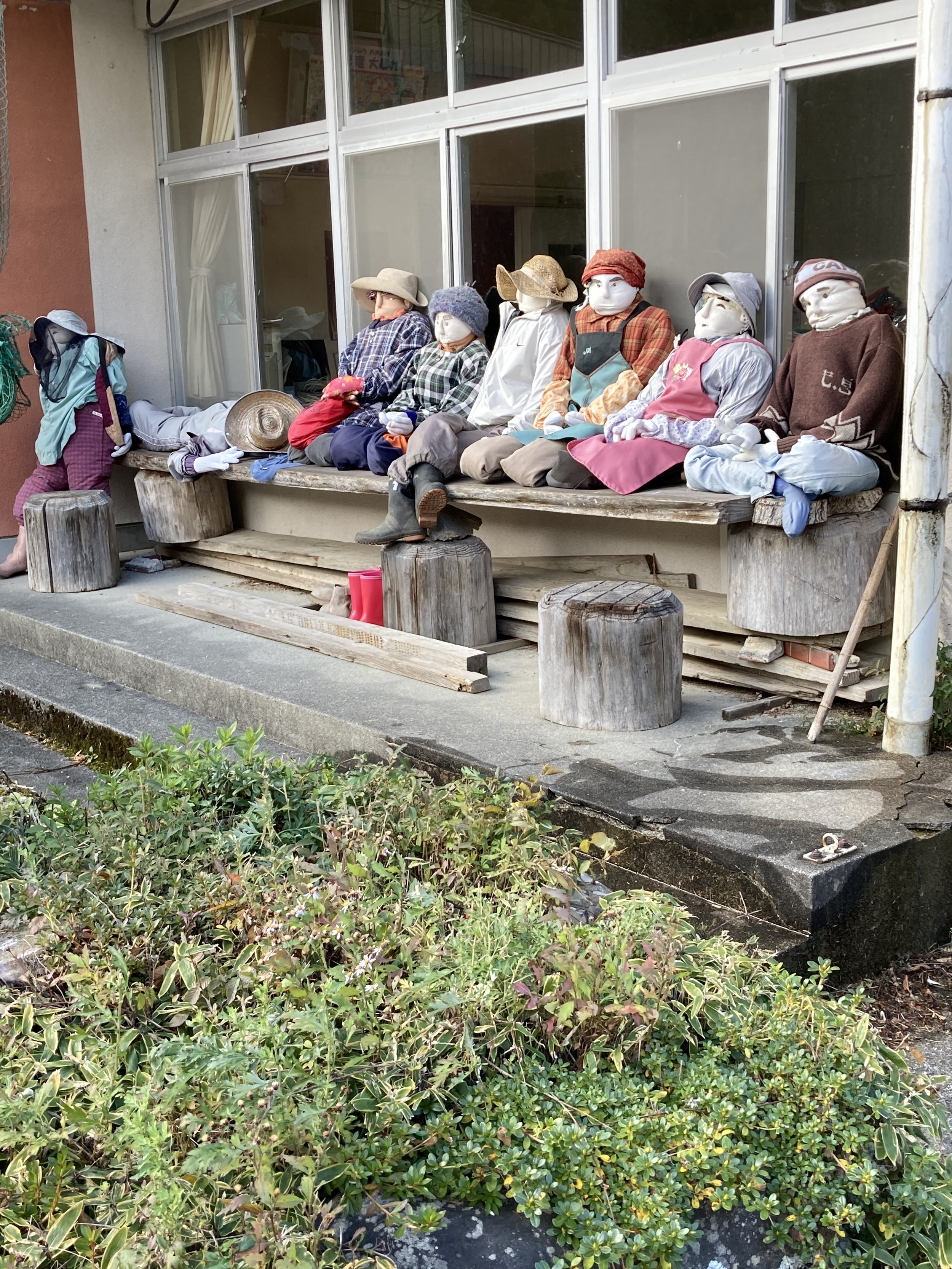Art takes so many different forms and serves such varied purposes in life. It is always fascinating to see how people find ways to make art central to their lives. But on the magical island of Shikoku in Japan, a lady developed an art form not only to create but also to combat loneliness and depopulation.
It all began when Ms Tsukimi Ayano returned home to her mountain village, Nagoro, from working in Osaka. Like so many Japanese villages, Nagoro had lost inhabitants. Numbers fell from about 300 to 27 in 2019, as young people left for the cities, as indeed Ayano’s family had done previously. Rice fields, an important source of food in the famed Iya Valley area where Nagoro is situated, are frequently destroyed by crows. When Ayano returned in 2002, she decided to create a scarecrow to protect her field.
Ms Tsukimi Ayano sat the door of her home, Nagoro (Kakashi-no-Sato)
The scarecrow was not any old traditional scarecrow. She created a life sized doll, made to resemble her father, even using his clothes. Not only was it successful as a scarecrow; she realised that passing people began to greet it and talk to it. An idea was born.
Ayano, in addition to being deliciously creative as a whimsical ceramicist, is highly skilled with needle and thread, making these incredibly realistic dolls out of sticks, rolled-up newspaper and fabric. Then she dresses these new inhabitants of Nagoro in clothes typical of their different stations and callings in life.
The result of her imaginative work is an entire village now populated by these dolls, some 400 to date, all in quintessentially typical poses for where they are positioned and what they are doing. It is almost as if one meets Japan in its diversity - at the bus stop, in the rice field, at the wood pile, pruning a fruit tree, doing exercises in the school gym, inspecting road works, fishing in the river, having a cup of sake with a pal, stepping into a shop, going to the government building...
It is utterly fascinating. The diversity of expression, pose, dress or occupation is endless. And when one meets Tsukimi Ayano in person, she is smiling, charming, self-effacing in her modesty. Her generous smile bespeaks of a lady who has de facto single-handedly put Nagoro on the tourist map of Shikoku’s beautiful mountain region, bringing admirers from far and wide, despite the narrow mountain roads leading to the village. Other villages have emulated her and she teaches classes of how to make scarecrows, as she calls them, out of these simple, recycled materials that everyone has to hand.
I found Nagoro and its “lady of the scarecrows”, Ayano, totally inspiring. How to turn around the fortunes of a depopulated, economically depressed area simply by imaginative art and thus banish the loneliness of solitude and isolation - she is a wonderful example.















